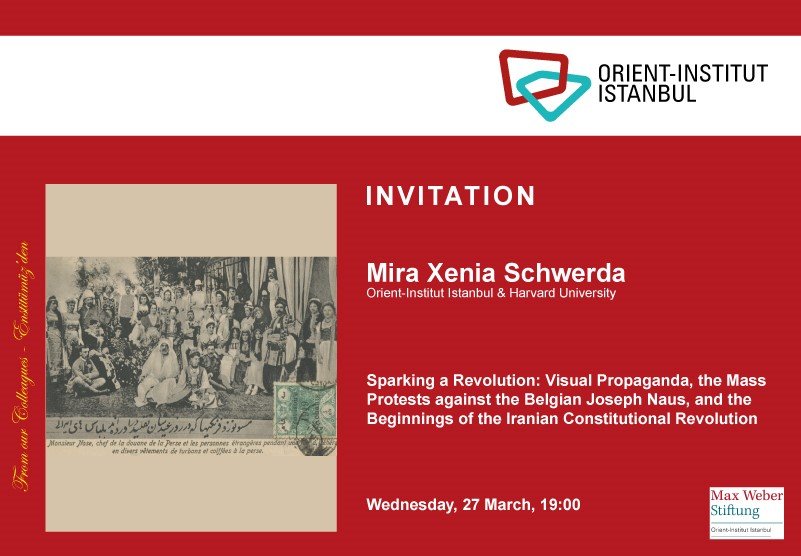März, 2019
Details
The talk will focus on a key event of the Iranian Constitutional Revolution: the protests against Joseph Naus, the Belgian head of
Details

The talk will focus on a key event of the Iranian Constitutional Revolution: the protests against Joseph Naus, the Belgian head of customs and taxation in Iran, who was also a minister at the Qajar court. Naus’s reforms had made him and his European and Armenian employees deeply unpopular and from 1903 on demonstrations against him took place in several Iranian cities. In the talk the role of a photograph of Naus will be highlighted, which the cleric Abdullah Behbahani used to turn disparate local protests into a nationwide movement. The presentation will be an analyse of the role of visual propaganda in the beginnings of the Iranian Constitutional Revolution and will explain how and why this specific photograph of Naus caused protests, death threats, and, finally, his dismissal.
Mira Xenia Schwerda is a historian and art historian of the modern Middle East and a PhD candidate in Harvard University’s dual program in Middle Eastern Studies and History of Art and Architecture. Her research focuses on the histories of printing and photography and the relationship of art and politics in the 19th century. Her dissertation analyzes the impact of photography on the Iranian Constitutional Revolution. Before coming to Harvard, she earned two M.A. degrees, from Princeton University in Islamic Art History, and from the University of Tübingen in Modern History, Iranian Studies, and Middle Eastern Studies. She has published several articles, including “Death on Display: Mirza Reza Kirmani, Prison Portraiture and the Depiction of Public Executions in Qajar Iran” in: The Middle East Journal of Culture and Communication (Brill), “Iranian Photography: From the Court, to the Studio, to the Street,” in: Mary McWilliams. David J. Roxburgh (eds.), Technologies of the Image: Art in 19th Century Iran, and “Amorous Couples: Depictions of Permitted and Prohibited Love,” in: David J. Roxburgh (ed.), An Album of Artists‘ Drawings from Qajar Iran, and curated three temporary installations on photographs of Persepolis as well as the photography section for the exhibition “Technologies of the Image” for the Harvard Art Museums.
Zeit
(Mittwoch) 19:00 - 21:00
Ort
Orient-Institut Istanbul
Susam Sokak No:16 Kat:3 Daire: 7 Cihangir - İstanbul
